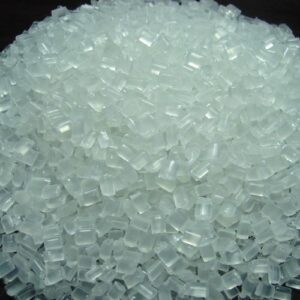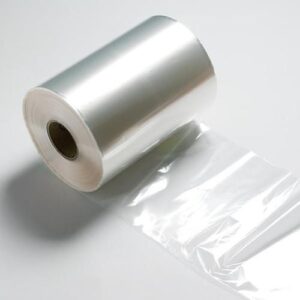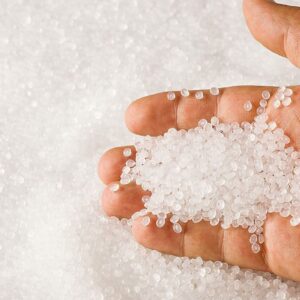Description
General Information
Let’s see what PP TQ Film Homopolymer is. Using Ziegler-Natta catalysts, polypropylene is polymerized into thermoplastic resins known as homopolymers. Homopolymers can be processed via various methods, including thermoforming, injection molding, blow molding, filming, fiberizing, and filming. Due to its superior strength-to-weight ratio, propylene homopolymer is stiffer and stronger than propylene copolymer. This, along with its good chemical resistance and weldability, makes it a material of choice in many corrosion-resistant structures.
Usage of PP TQ Film Homopolymer
The most popular all-purpose variety of film polymer is PP TQ Film Homopolymer. Propylene monomer is the only ingredient in this semi-crystalline solid. Common uses can be found in various industries, including packaging, textiles, healthcare, pipes, and automobiles.
Uses for Packages. PP TQ Film Homopolymer has many desirable qualities for use in packaging, including its low cost, high strength, good surface finish, and high barrier properties. Modular packaging. The low moisture-vapor transmission and high optical clarity of PP films make them ideal for food packaging. Disposable diaper tabs and closures are other markets for shrink film, along with overwrap for electronics, films used in the electronic industry, graphic arts, and other uses. Cast film and bi-axially oriented PP film are two types of PP film (BOPP). Having a rigid case. Blowing molding PP results in crates, bottles, and flower pots. Thin-walled polypropylene (PP) containers are frequently used for food packaging. Consumer goods. Translucent components, housewares, furniture, appliances, luggage, and toys are some of the many consumer goods and household items that use polypropylene.
Use in automobiles. Polypropylene is widely used in automotive parts due to its very low cost, outstanding properties, and moldability. Most commonly, it is used for battery compartments and trays, bumpers, fender liners, interior trim, instrument panels, and door trims. PP’s low coefficient of linear thermal expansion and specific gravity, great chemical resistance, good weather ability, processability, and impact/stiffness balance are also advantageous in automotive applications. Various medical uses. Polypropylene’s chemical and bacterial resistance makes it useful in several medical contexts. In addition, the PP used in medical applications holds up well against steam sterilization. The most widespread use of polypropylene in the medical field is for disposable syringes. There are a wide variety of other uses for plastic, including medical vials, diagnostic tools, Petri dishes, intravenous bottles, specimen bottles, and even food trays, pans, and pill containers.
| Applications |
| Packaging different types of products such as foods and…
Textiles Healthcare (medical vials, diagnostic tools, Petri dishes, intravenous bottles, specimen bottles and… Automobiles (battery compartments and trays, bumpers, fender liners, interior trim and…) Pipes Industry |
PP TQ Film Homopolymer
Technical data sheet & Chemical Formula
The molecular formula of PP TQ Film Homopolymer is (C3H6)n. PP is one of the least expensive plastics on the market. Among the three most popular polymers in use today, PP is a member of the polyolefin family. So, let’s check out the datasheet.
| Property | Value |
| Melting point | 160-165°C |
| Density | 0.904-0.908 g/cm3 |
| Threshold odor concentration | Not available. |
| Flash point | >300°C (>572°F) |
| Auto-ignition
temperature |
>410°C (>770°F) |
| Percent volatile by volume | <0.1 % |
Packing of PP TQ Film Homopolymer

Packing
PP TQ Film Homopolymer is usually packed in rolls or boxes. The boxes can be between 10 kg to 500 kg and more. The rolls sizes are generally between 4000 m to 6000 m and more.
Safety & warning & transportation of PP TQ Film Homopolymer
From the perspective of chemical toxicity and workplace safety, PP TQ Film Homopolymer use is deemed to be risk-free. Artificial respiration must be given if breathing becomes erratic or ceases altogether. Keep an eye on breathing, and administer oxygen as needed. Please see a doctor. Remove to fresh air if you accidentally breathe in fumes from melt processing. Upon direct skin contact, scrub it off with a lot of water. After touching the molten polymer, rinse the skin thoroughly with cold water. Avoid removing polymer by peeling. Please see a doctor. In the event of eye contact, flush the eyes for at least 15 minutes with water and seek medical attention. Seek medical attention if swallowed. Don’t make yourself throw up unless your doctor says to. If someone is unconscious, you should never give them anything by mouth.
Keep out of direct sunlight and at room temperature when storing. Keep away from any heat or flame. Static electricity can build up in the material and generate a spark if the conditions are met. There are no transport restrictions on this item. This commodity is considered non-hazardous by all national and international criteria governing its carriage by land, air, and sea.






Reviews
There are no reviews yet.